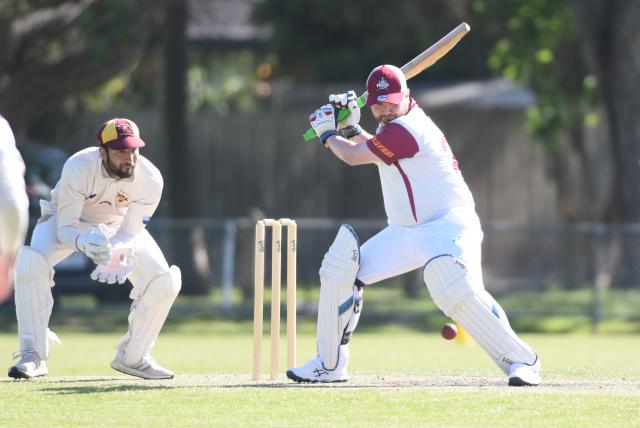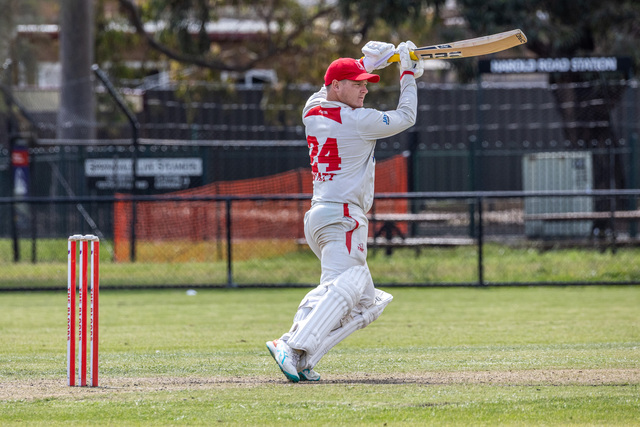John Strachan is at war – and the battleground is his Oakleigh South backyard. The enemy? Some 23 centimetres of brown and black feathers, piercing eyes and a screech to match.
Or, as Strachan succinctly puts it, “the world’s most hated bird” — the Indian myna.
There are just three of them left in his yard now, “the cunning ones”, Strachan says.
“I had a plague of them around here. A neighbour was feeding them. I caught about 150 and haven’t had many since, except for these three . . . they become wise to it after a while.”
Strachan is just one of many like-minded ‘suburban environmentalists’ taking the growing problem of these aggressive birds into their own hands.
Indian mynas are in the top 100 of the world’s most invasive species, and were voted as the nation’s most significant pest in the ABC Wildwatch Australia Survey in 2005 — beating the cane toad and cockroach.
Indian mynas were introduced to Melbourne in the 1860s to combat insects in market gardens. Now, it is estimated their numbers have swelled to the millions — they can lay up to seven eggs in one clutch, three times a year.
Research based on 20 years of ornithologists’ observations recently proved what many birdwatchers had long claimed — that the Indian myna was squeezing out native species by stealing food and nesting spaces.
But controlling the growing ranks of these so-called ‘flying rats’ is the choice of landowners. In Victoria, the Department of Primary Industries has yet to officially declare it a pest animal but people can capture and destroy them humanely.
Enter the Yarra Indian Myna Action Group, one of the first community groups dedicated to controlling and reducing mynas locally.
From humble beginnings in Melbourne’s north-east in 2010, it has led the charge in culling the birds. and now has about 380 traps in circulation, selling them right along Melbourne’s outer eastern and south-eastern corridor, from Ringwood to Ferntree Gully to Berwick.
The purpose-built wire traps are baited with dry cat or dog food, luring in up to a dozen birds at a time. They are then humanely euthanased either by gas or having their necks broken.
YIMAG’s vice-president Max Caithness says native bird species have declined 50 per cent in the past 15 years and part of this can be attributed to the Indian myna.
“They are highly adaptable to their environment and there’s considerable loathing of them — people don’t like their aggressiveness. Once their numbers grow, they certainly aren’t nice.”
The mynas’ aggression goes much further than just driving other birds away — Caithness has heard reports of them throwing baby kookaburras out of nests, killing smaller birds and even driving possums out of their hollows.
Home owners find them creating nests in eaves, or discover roof gutters clogged with the rubbish they gather and dump.
Caithness estimates the number of destroyed birds is higher than the 3000 the group has on its records — but even still, it has barely made a dent in the population.
“We’re hopeful of other groups forming so they can take control of their own areas, but for it to really take off we really need something happening in the council chambers. We’re not going to make an impact until we start catching thousands in each shire.”
While YIMAG has had support from the Shire of Nillumbik, not many other councils have jumped on board in supporting community efforts.
Yarra Ranges Shire is one of the few and has sponsored workshops teaching residents how to build their own trap and humanely kill the birds.
Montrose resident Roger Rooks attended one such workshop to take the problem into his own hands.
“We had about a dozen of them outside our bedroom window. They’d gotten into the eaves and were making such a noise and mess. I reckon since using the trap we’ve seen the return of the smaller birds, like the little blue wrens.”
As much as he’s pleased with the results, Rooks says having to kill the birds himself was “no good”.
“The first time you do it, it’s not pleasant. You have this inbuilt thing, I think, not to kill birds. It just doesn’t seem right. But once you realise the damage the mynas do, it’s easier.
“I was surprised by the positive response we got when neighbours heard what we were doing.”
Strachan agrees that councils and other levels of government need to get on board. “If people aren’t wanting to kill them themselves, they could take them to a council depot where they can be gassed,” he suggests.
Strachan himself has no qualms about destroying the birds. He bought his trap through YIMAG directly, and as a plumber has seen his fair share of the damage they cause.
“They’re a pest. It’s no different to getting rid of rabbits. I reckon they’ve increased in the past two years.
”I just had to do something, they were driving me nuts with the mess and the noise. I love the birds, I love to see them around – but not the foreigners.”
Recent research by the Invasive Animals Co-operative Research Centre and Australian National University has shown significant decline in 11 species since the introduction of mynas — crimson rosella numbers had fallen from 5.9 a square kilometre to 2.4, sulphur crested cockatoos by 2 a square kilometre, and kookaburras by about 0.4.
These figures could be the impetus needed to finally get the bird officially listed as a pest. The Department of Primary Industries is developing a new invasive species management bill due to be submitted to Parliament by 2014.
If the myna is listed, it could pave the way for more government-sponsored action.
Until that day, Strachan will continue his backyard crusade against those last three “cunning ones”. “I just can’t catch these last few . . .”
Details: yimag.org.au.
What do you think? Post a comment below.
For all the latest breaking news, stay with this website. Also, follow the Weekly at facebook.com/dandenongjournal or on Twitter @DandenongJournal.
What do you think? Post a comment below.
What do you think? Post a comment below.
What do you think? Post a comment below.







